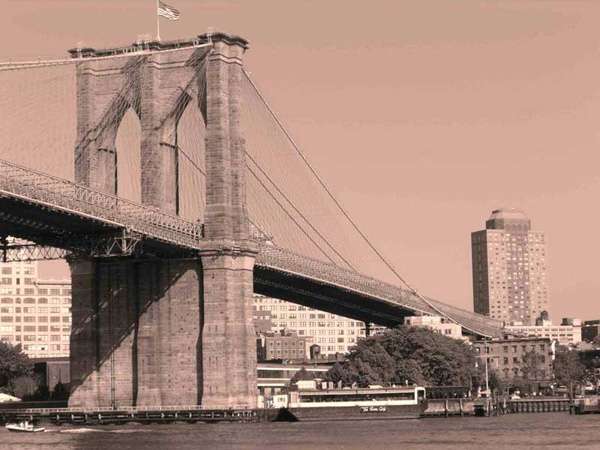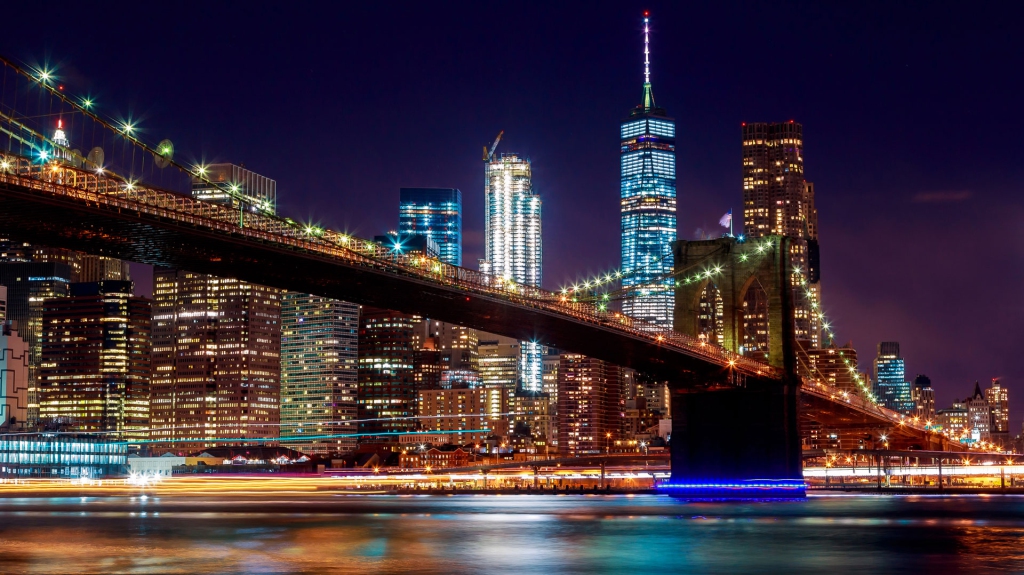It has stood there for over 130 years and is one of New York’s most photographed landmarks. Of course we are talking about the landmark bridge Brooklyn Bridge. But how much is known about this bridge and what secrets does it hide? Let’s discover them.
At least 20 people died during construction
The first incident occurred in 1869 before construction had even begun. German-born John A. Roebling, who designed the bridge, while surveying the sites, had his leg broken on the pier by an incoming ship. His toes were amputated, and a few weeks later he died of tetanus. Other workers fell from the 85 meter towers, others were hit by falling debris or succumbed to CAISSON disease, better known as “divers disease. There is no official number of men killed, but estimates range from 20 to over 30. Dozens more were injured, including Roebling’s son, Washington, who was crippled by divers’ disease after taking over as chief engineer from his father.
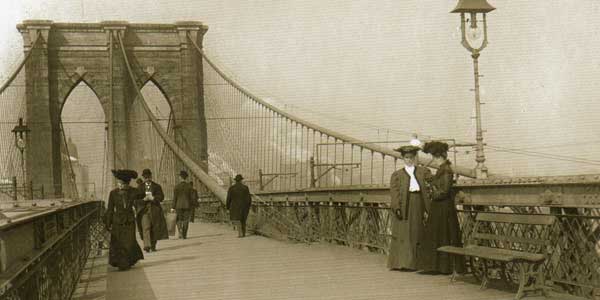
The elephants and the showmen
The manager of a circus, R.T. Barnum, drove 21 elephants over the bridge in May 1884 to prove it was safe. The following year, Robert E. Odlum, a swimming instructor from Washington, DC, became the first person to jump into the East River from below. He died, but some other jumpers survived, including a man who tried to impress his girlfriend and another who wore large artificial wings. Other stuntmen have flown airplanes under the bridge, bungee jumped or climbed the towers.
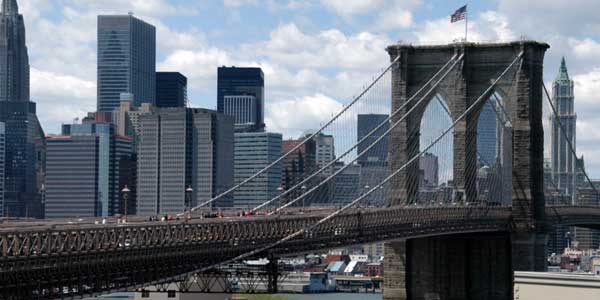
The hawks
Peregrine falcons are the fastest animals on record, capable of reaching speeds of over 200 miles per hour. Their disappearance from the eastern United States was due to DDT poisoning, but they returned after the pesticide was banned in 1972. Amazingly, the birds soon began to thrive in New York, nesting on bridges, church steeples and skyscrapers. Today, about 16 pairs of falcons live in the Big Apple, and the Brooklyn Bridge has become one of their regular nesting grounds.
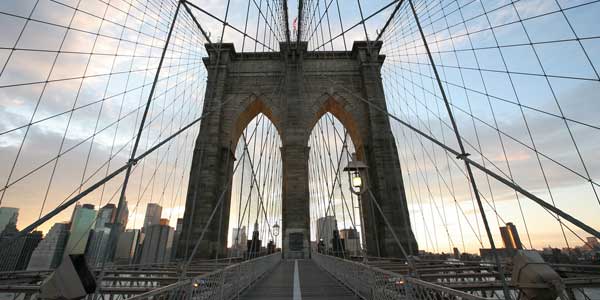
A tragedy without reason
A week after opening, on Memorial Day, about 20,000 people were on the bridge. A woman walking down the steps on the Manhattan side tripped, and her company screamed. The scream was the trigger for a rumor that the bridge was about to collapse. In the panic of impending disaster that ensued, 12 people were killed and 35 others were seriously injured.
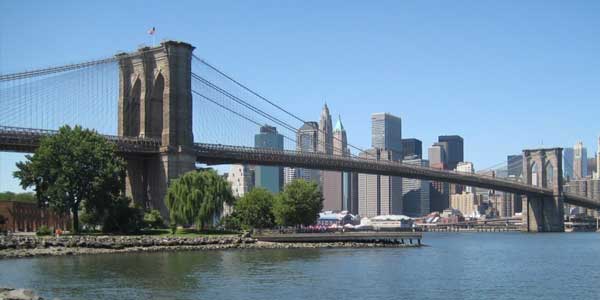
The opening celebration
Huge crowds gathered on May 24, 1883, to witness the opening ceremony of the bridge. President Chester A. Arthur, New York Governor (and future president) Grover Cleveland, and various local politicians marched over the bridge, along with a military band and a corps of soldiers. Celebratory cannons were fired when they reached the tower on the Manhattan side. Festivities also included a fireworks show, receptions and a series of speeches. Shortly before midnight the bridge opened to the public, and more than 150,000 people crossed the bridge in the next 24 hours.
The longest suspension bridge in the world (at that time)
With a main span of just over 486 meters, a width of 26 meters and a height of 86 meters (from the towers), it was by far the longest suspension bridge in the world at the time it opened. It remained in this position until 1903, when the nearby Williamsburg Bridge surpassed it by 4.5 meters. After 130 years it stands tall as one of New York’s most popular landmarks.

Tolls and free passage
When the Brooklyn Bridge first opened, it cost a penny for pedestrians, 5 cents for a horse and rider, and 10 cents for a horse and carriage. Livestock also paid, 5 cents per cow and 2 cents per sheep or pig. Under pressure from citizens and passersby, pedestrian tolls were abolished in 1891. Tolls for others were abolished in 1911 with the support of New York City Mayor William J. Gaynor.

The union of two cities
Brooklyn did not become part of New York City until 1898, after the referendum passed by just 277 votes (out of more than 129,000 voters). Before the merger, it was the fourth most populous city in the country, behind New York, Chicago and Philadelphia with many jobs, many churches, a relatively low crime rate and good schools.
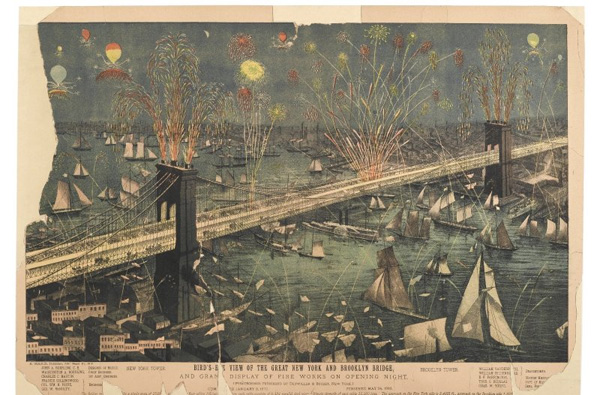
The Cold War Shelter
Workers conducting a routine inspection of the bridge found a Cold War-era supply chamber inside the foundation near the Manhattan shore. More than 350,000 items, including half-century-old water barrels, metal food cans and medical supplies were found inside the chamber. These supplies would be used in the event of a nuclear attack on New York.
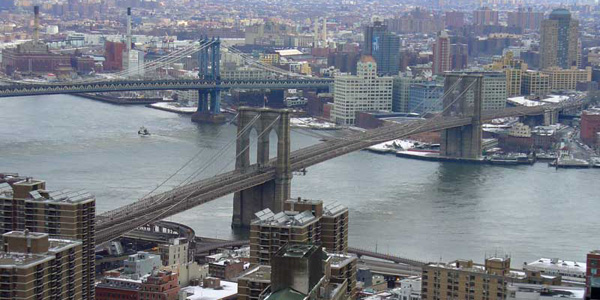
An inspiration to many
The Brooklyn Bridge has arguably inspired art more than any other human structure in the United States. Georgia O’Keeffe, Andy Warhol and dozens of other famous painters have depicted it in their works, as have photographers (Walker Evans), playwrights (Arthur Miller), novelists (Henry Miller), newspaper columnists (Jimmy Breslin), historians (Lewis Mumford), poets (Jack Kerouac) and musicians (Wyclef Jean). He has also appeared in a number of TV shows and movies, including “The Docks of New York”, “It Happened in Brooklyn”, “Moonstruck”, “Godzilla” and “Spider-Man”. Advertisers have also used the bridge to sell everything from Vaseline to Absolut Vodka to the still iconic Italian brand of chewing gum.
